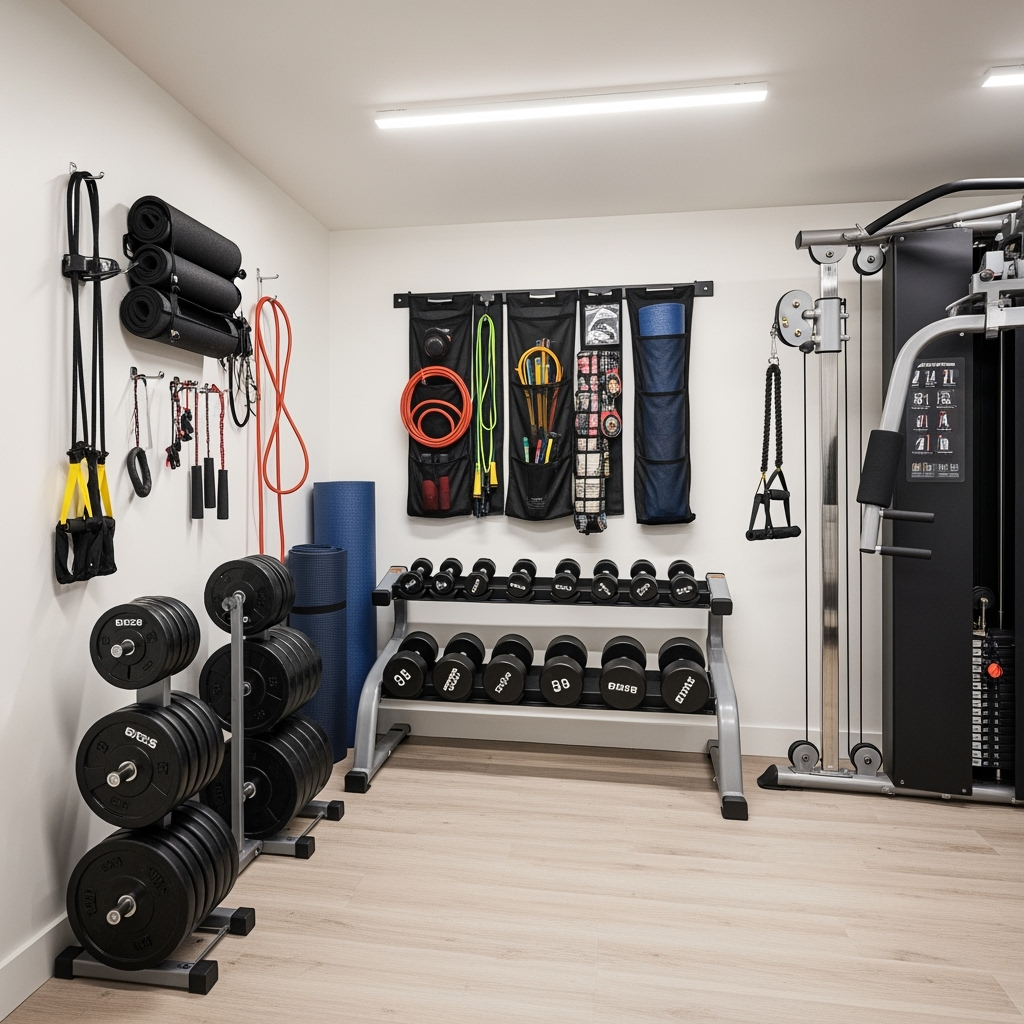
Why Proper Storage Matters for Home Gym Equipment
With the rise of home fitness, protecting your exercise equipment investment has become more important than ever. Whether you’re storing equipment during a move, renovating your workout space, or managing seasonal storage needs, proper storage techniques can significantly extend the life of your fitness gear while maintaining its performance and safety.
Climate-Controlled Storage: Your Equipment’s Best Friend
Temperature fluctuations and humidity can be devastating to home gym equipment. Climate-controlled storage units offer the perfect environment to protect:
- Electronic components in cardio machines
- Rubber and foam materials in mats and equipment
- Metal surfaces prone to rust and corrosion
- Leather and vinyl upholstery on weight benches
Organization Strategies for Different Types of Equipment

Cardio Equipment
Large cardio machines require special attention during storage:
- Clean and sanitize all surfaces before storage
- Fold equipment when possible to save space
- Use manufacturer-recommended storage positions
- Cover equipment to prevent dust accumulation
- Elevate off the ground using pallets or platforms
Weight Training Equipment
Proper organization of weights and strength training equipment ensures safety and accessibility:
- Store dumbbells and weight plates on dedicated racks
- Use sturdy shelving rated for heavy loads
- Keep barbells horizontal to prevent warping
- Group similar weights together for easy access
- Apply rust-preventive coating on metal equipment
Protecting Small Equipment and Accessories
Don’t overlook your smaller fitness items:
- Roll yoga mats properly to prevent cracking
- Store resistance bands away from direct sunlight
- Keep foam rollers in climate-controlled environments
- Use sealed containers for small accessories
- Label everything clearly for easy identification
Storage Unit Size Guidelines
Choose the right storage unit size based on your equipment:
- 5×5: Perfect for small equipment and accessories
- 5×10: Ideal for a basic home gym setup
- 10×10: Accommodates multiple large machines
- 10×15: Suitable for complete home gym storage
Maintenance During Storage
Regular maintenance ensures your equipment stays in top condition:
- Monthly inspections for signs of moisture or rust
- Regular dusting and cleaning
- Lubrication of moving parts as recommended
- Battery removal from electronic equipment
- Documentation of maintenance activities
Professional Storage Tips
Maximize the longevity of your fitness investment with these expert recommendations:
- Create a detailed inventory with photos
- Keep owner’s manuals and maintenance records
- Use proper lifting techniques when moving equipment
- Consider insurance for high-value items
- Plan the layout for easy access to frequently used items
When to Choose Climate-Controlled Storage
Invest in climate-controlled storage when:
- Storing electronic exercise equipment
- Planning long-term storage (3+ months)
- Living in areas with extreme temperature variations
- Protecting high-end fitness investments
- Storing equipment with sensitive components
Conclusion
Proper storage of home gym equipment is an investment in its longevity and performance. By following these professional storage guidelines and choosing the right storage solution, you can protect your fitness equipment while maintaining its value and functionality. Consider Public Storage’s climate-controlled units for the optimal protection of your home gym investment.










Leave a Reply